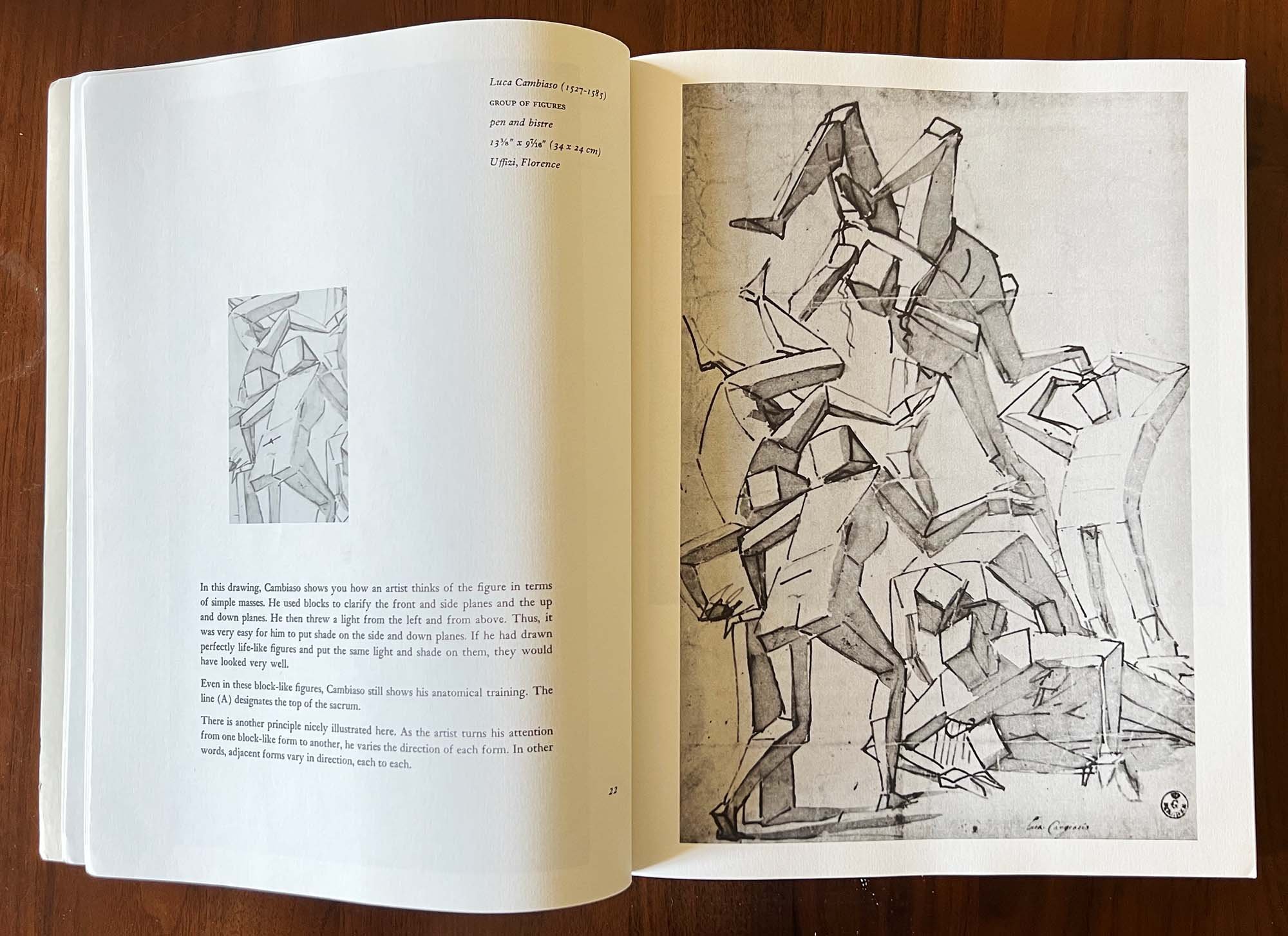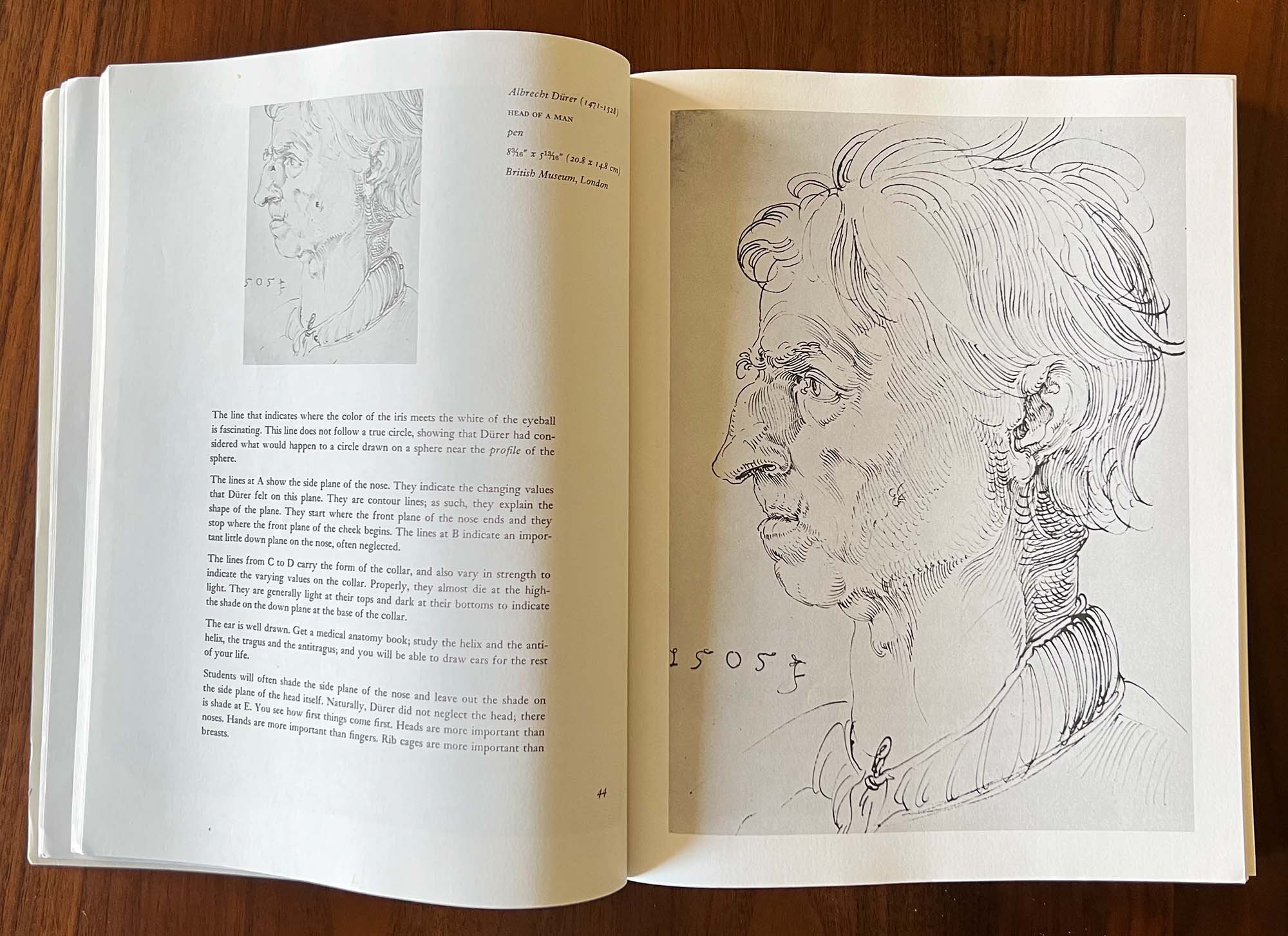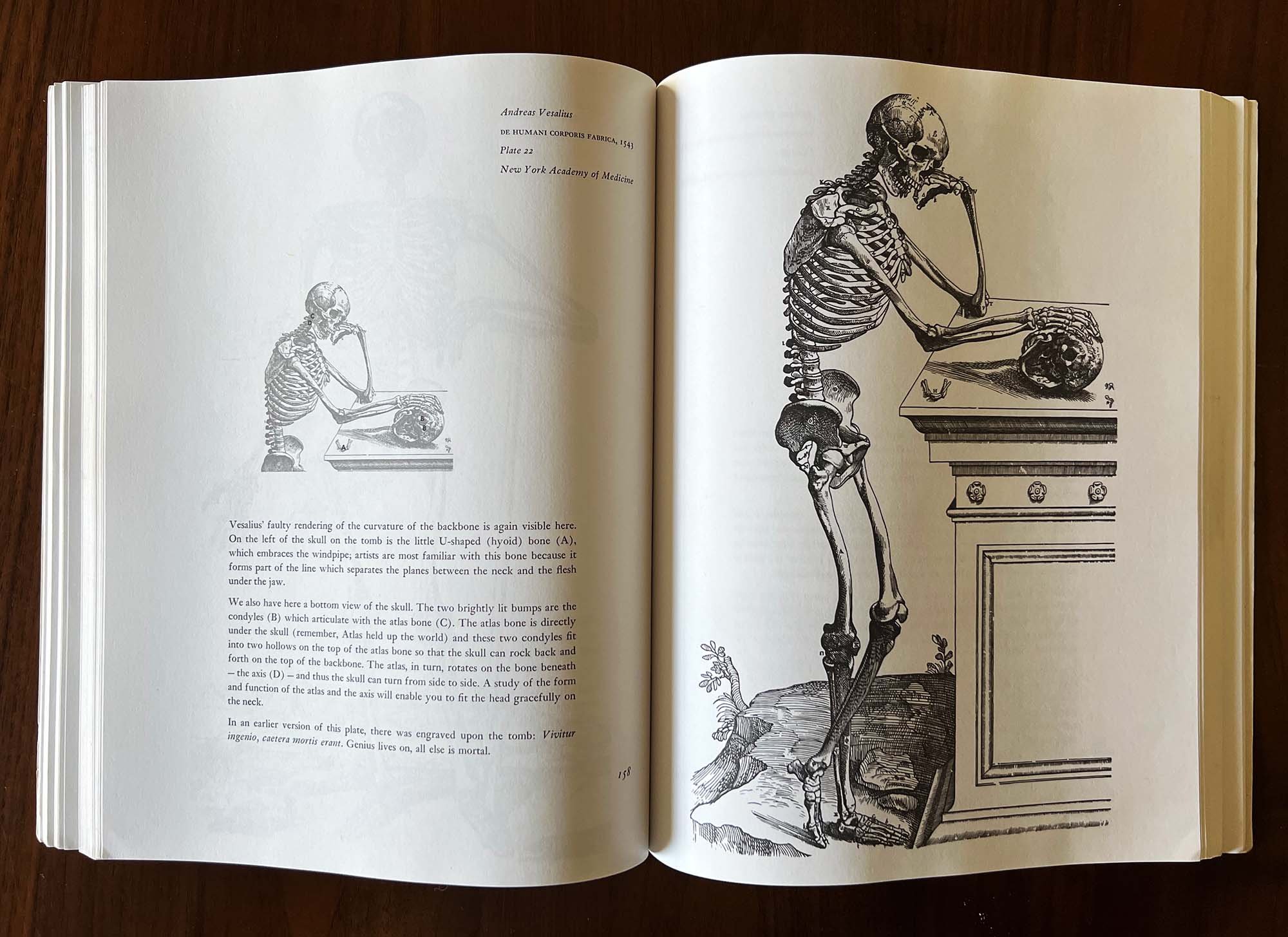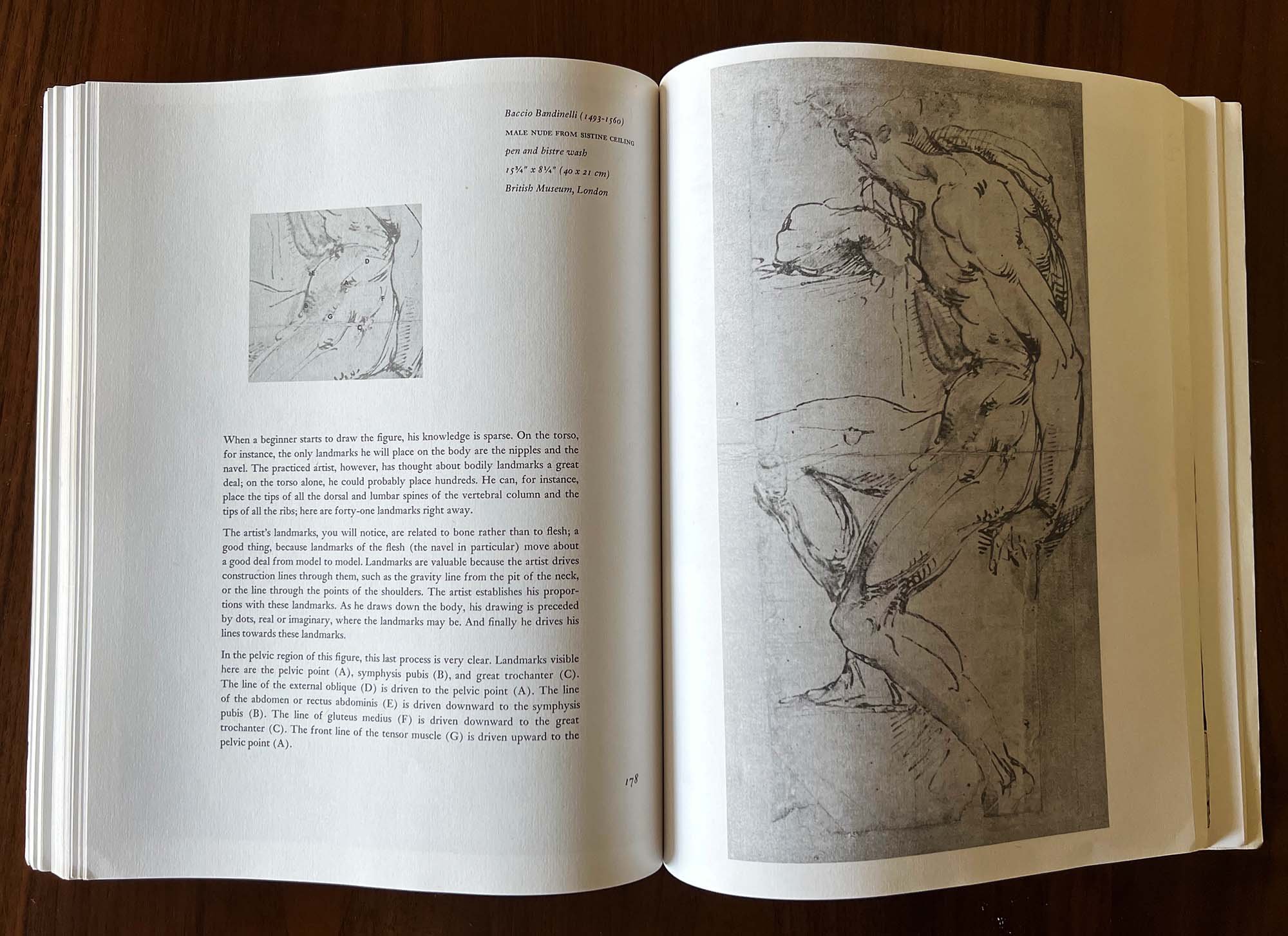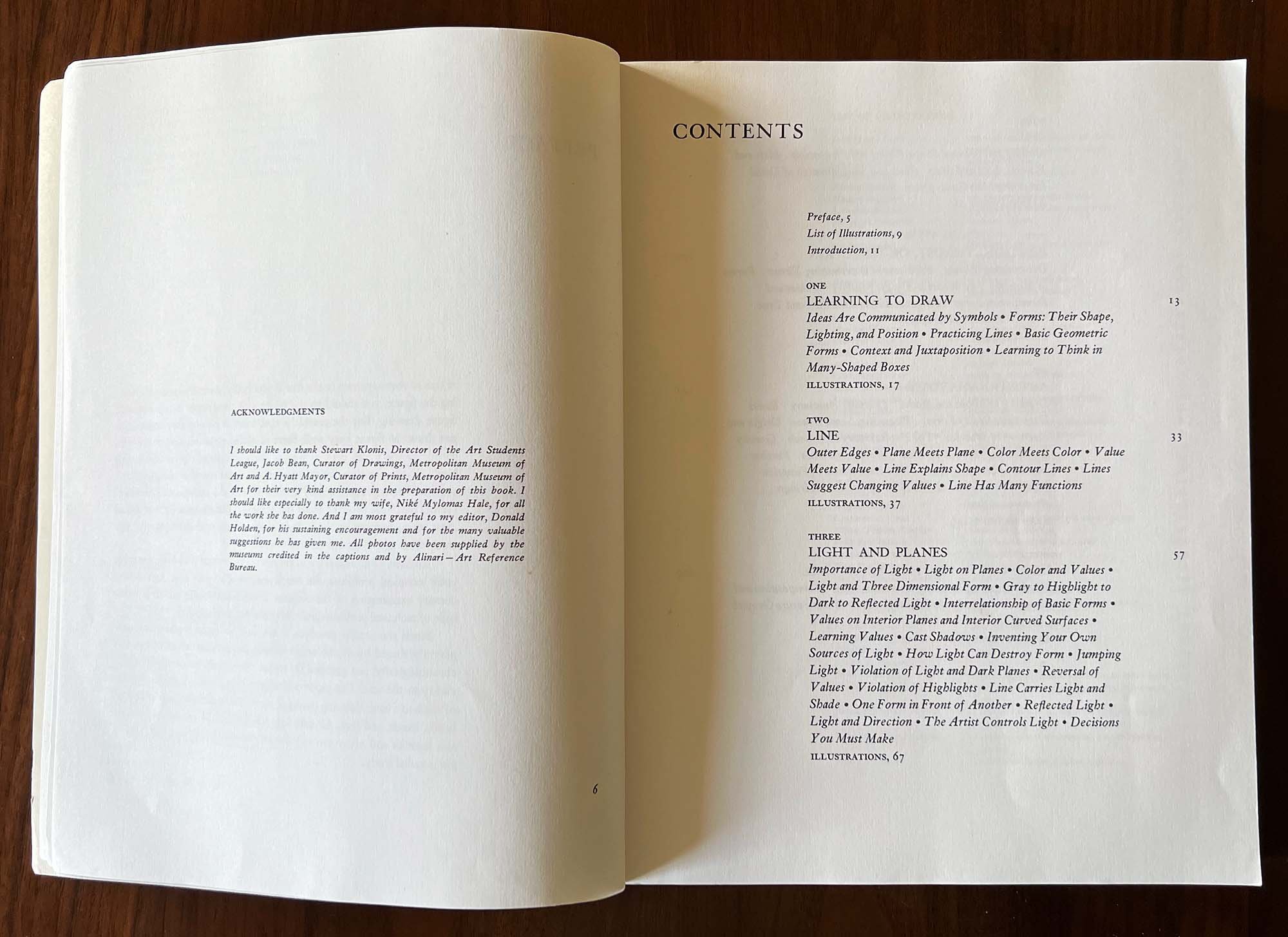Drawing Lessons from the Great Masters is a classic book by Robert Beverly Hale. Known for his teaching on artistic anatomy, Hale was also curator of American Paintings and Sculpture at the Metropolitan Museum of Art in New York and taught at the Arts Student League of New York, Columbia University, and other schools.
Presented as a series of lectures on 100 drawings, Drawing Lessons takes students through different topics including Line, Light and Planes, Mass, Position, Anatomy, and then bringing all the skills together.
Each topic / chapter begins with an introduction and proceeds through example illustrations. Each illustration, presented in black and white, has a full page image and a smaller detail image where various points are highlighted in the text.
Overall, this is a great resource if just for the illustrations. While it’s a product of its time—the focus on all male “great masters” is dated—the book is useful for anyone looking to deepen and expand their understanding of drawing.
Originally published in 1964, the more recent 1989 edition is still available new or used at various online bookstores.
Drawing Lessons from the Great Masters: 100 Great Drawings Analyzed / Figure Drawing Fundamentals Defined
By Robert Beverly Hale
Published 1964 (Paperback edition 1989) by Watson-Guptill Publications
Listed at $25 but available for $5-15 used
Keep reading below for more images and info from the book.
Images from the Book
Group of Figures by Luca Cambiaso
Standing Figure of a Nude Woman by Annibale Carraci
The two-page spread on Head of a Man by Albrecht Dürer
Tabulae Sceleti Et Musculorum Corporis Humani, 1747, by Bernard Siegfried Albinus
De Humani Corporis Fabrica, 1543, by Andreas Vesalius
Male Nude from Sistine Ceiling by Baccio Bandinelli
Robert Beverly Hale on Drawing
From the introduction:
Drawing, like so many other skills, is a matter of being able to think of several things at once. Since the conscious mind seems to be able to think about only one thing at a time, the subconscious mind must take care of a good deal when we draw. So the process of learning to draw demands that we acquaint the subconscious mind with a certain amount of material, so that the subconscious can largely take over the control of our hand.
Actually, I am inclined to think that no artist can be called an accomplished craftsman until all matters of technique are so well learnt that they are part of his subconscious equipment. I know it is very difficult for an artist to express himself adequately unless this has been done.
Students and laymen, of course, are apt to confuse that technique is but na means to an end, and should never be confused with the end itself.
Table of Contents
Have you used this book or other drawing books? Let us know what you think in the comments.

